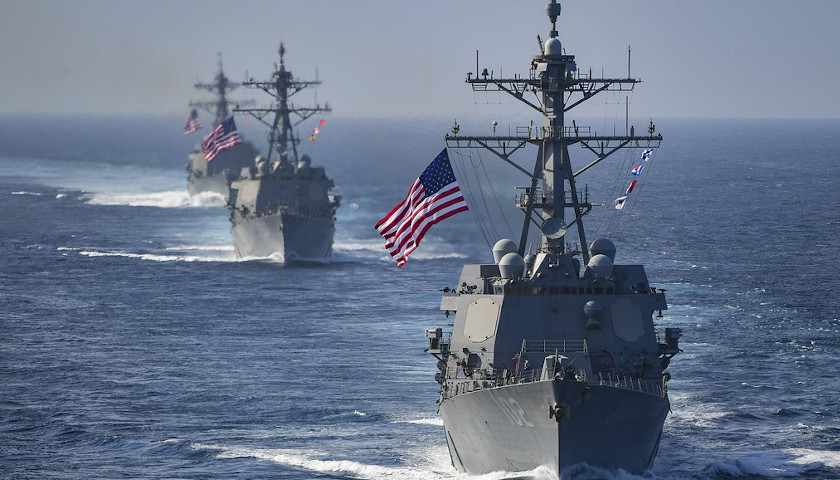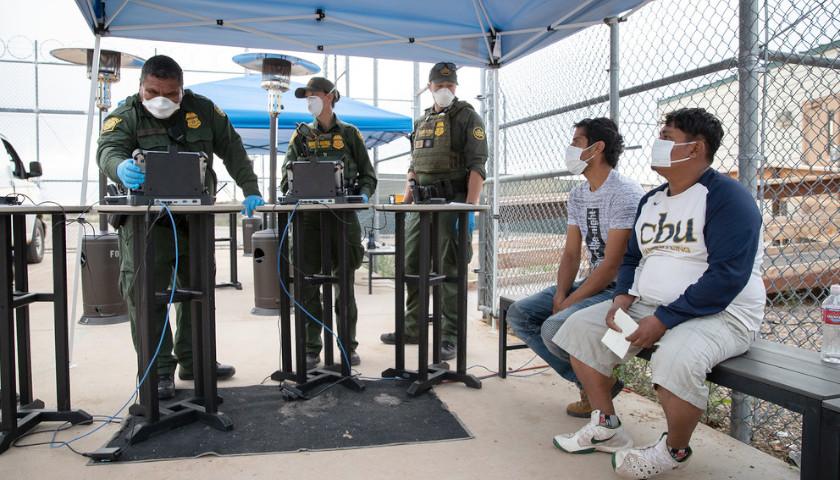by James E. Fanell and Bradley A. Thayer
One of the biggest news stories coming out of Asia for the New Year was the alleged purge of senior People’s Liberation Army (PLA) officers, most notably the former PRC Minister of Defense Li Shangfu who went missing in late August 2023 and was formally removed from his position in October. This so-called purge, which also included three senior defense industry officials, was in fact the result of the Chinese Communist Party’s (CCP) annual announcement of the new slate of delegates for the upcoming Chinese People’s Political Consultative Conference (CPPCC), an advisory body of the PRC’s annual National People’s Congress (NPC), that is held each year, usually in early March.
Despite some of these officials having not served in uniform for several years or the fact that General Li Shangfu and two senior PLA Strategic Rocket Force Generals were announced two months earlier as having been removed, the New Year’s headlines from venerable news organizations like the Wall Street Journal and Reuters exclaimed, “China’s Military Shake-Up Raises Questions About Combat Readiness” and “Sweeping Chinese military purge exposes weakness, could widen.” Interestingly, these organizations appear to have bought into a CCP propaganda line that was first originated by the pro-PRC South China Morning Post whose December 30 headline stated, “China removes 9 PLA generals from top legislature in sign of wider purge.” Another example is the recent Bloomberg article “US Intelligence Shows Flawed China Missiles Led Xi to Purge Army,” which quotes “people familiar with the assessments” who assert “the corruption inside China’s Rocket Force and throughout the nation’s defense industrial base is so extensive that US officials now believe Xi is less likely to contemplate major military action in the coming years than would otherwise have been the case.”
All of which is to point out that the practice of what the authors’ term in their forthcoming book (Embracing Communist China: America’s Greatest Strategic Failure) is “threat deflation.” This pernicious practice of underestimating the PRC threat year-after-year while it continues to grow—one year after the next without interruption—has been perfected by the pro-PRC engagement community despite the prodigious growth in the PRC’s military capabilities. In this instance, threat deflation centers on the notion that CCP General Secretary Xi Jinping had been forced to purge scores of officers because of either rampant corruption or, worse, that he was in jeopardy of losing control over the regime. Therefore, it is assessed that the PLA is weaker than estimated and therefore not a near-term threat to America’s national security. In addition to these previous articles alleging corruption and incompetence in the PLA, the impact of these assessments was recently summarized by retired U.S. Navy Admiral Jim Stavridis, a former NATO Supreme Commander, who stated, “China, in my estimation, will not be ready to take on the US in a very mature way for about 10 years.”
This kind of threat deflation is dangerous for America’s national security for two reasons. First, it is a mistake to believe that the removal (or even a purge) of PLA officers will automatically diminish the combat lethality of the PLA or reduce the risk of invasion of Taiwan or attacks against other allies in the East and South China Sea. This threat deflation thesis is factually incorrect—plain and simple. While it is true that this year’s delegates list may have more changes to PLA officers than ever before, none of these purported experts quoted by these news organizations provided any comparison with previous years where PLA officers had also been removed from the CPPCC’s delegates lists. The fact is, changes regarding PLA officers at the NPC/CPPCC are not unprecedented. Additionally, as part of his “Tigers and Flies” anti-corruption campaign, now in its second decade, Xi has also previously netted two prominent PLA officers, Guo Boxiong and Xu Caihou, both of whom were former vice-chairmen of the CMC.
We should not forget that in 2015, Xi announced the removal of 300,000 military members from the PLA who were not directly involved with warfighting duties and responsibilities. Since that real purge, the PLA has only gotten more lethal, not less. The same can be said for Xi’s total reorganization of the PLA from seven military regions prior to 2015 to now being just five theater commands. Again, this was a major, massive organizational change, and the result was not a diminishment of the threat from the PLA but exactly the opposite, as the PLA’s combat capabilities and confidence have only strengthened.
The second pernicious impact from this deluge of reporting about the “purge” of senior PLA officers and this knee-jerk assumption of a degradation in PLA readiness is that these same alleged experts have for the most part totally ignored the most important story coming out of the PRC in this New Year—the announcement of Admiral Dong Jun, former Commander of the PLA Navy, as the new National Defense Minister of the PRC.
This is unquestionably one of the most significant shifts in the PLA since Xi’s 2015 PLA reorganization. It represents the PRC’s transformation from being a traditional “land power”-only state to one that is now truly a “maritime power.” Selecting Admiral Dong to lead the PLA is unprecedented in the history of the PLA and reflects the continuing ability of Xi in transforming the PLA from being land-centric to a military that is far less so and increasingly orientated to nuclear forces and naval power across the spectrum from acquisition, training, and operations.
For decades, the so-called “China Hands,” of which there is a PLA faction, assured presidents and their national security teams that the PLA Army was still the most dominant service in the PRC, thus feeding the “threat deflation” thesis that the PLA was not an imminent threat to American national security. Those same assessments have been wrong for years. However, with the appointment of Admiral Dong, there is no more room to hide for many of these former U.S. Army officers and intelligence analysts who have told us that the PLA is still backward and unprepared for combat against the U.S. and its allies.
There are two major considerations that are immediately relevant for the U.S. and the Department of Defense (DoD). First, given Admiral Dong’s experience as the first Commander of the newly established East China Sea Joint Operations Command Center (ECS JOCC) in 2013, we can conclude that his selection means that the timeline for an invasion just got shorter. Second, with the world’s largest Navy—numbers of hulls, overall tonnage built in the past decade, and in numbers of super-sonic anti-ship cruise missiles—the country and the DoD must now acknowledge and understand the importance of the maritime domain and recognize that the U.S. confronts an adversary whose immediate operational goal is to sink the U.S. Pacific Fleet. As was noted by U.S. Navy War College China Maritime Studies expert Ryan Martinson, Admiral Dong, when he was the Chief of the PLA Navy in December 2022, led a senior naval officer conclave whose objective was to take all necessary preparations to defeat the U.S. Navy.
Unfortunately, for over a year and a half, the Biden administration has made it known that they deeply desire to resume mil-to-mil engagement with the PLA. The country has witnessed its Secretary of Defense, Commander of Indo-Pacom, Cabinet members, and the President himself essentially publicly begging for the resumption of mil-to-mil. At the Xi-Biden meeting in San Francisco in mid-November, Xi deigned to allow for the resumption of mil-to-mil talks. Then, for over a month, there was nothing until December 21, when there was a video teleconference (VTC) between the U.S. Chairman of the Joint Chiefs of Staff, General C.Q. Brown, and the PLA of China Chief of the Joint Staff Department, General Liu Zhenli. Eight days later, Admiral Dong was announced as the new PRC Minister of Defense. Notably, the PLA conducted this VTC with the lower-ranking PLA Chief of Staff and not with the new Defense Minister, Admiral Dong. Besides being another slap in the face to the Biden administration, this fact demonstrates once again how the PRC continues to manipulate the U.S. through the political warfare tactics of mil-to-mil exchanges and talks.
As it relates to the pernicious impacts of threat deflation, we must also remember that this kind of political warfare campaign would be something that one would expect from an adherent to Master Sun Tzu, who said to “appear weak when you are strong.” Today, the PRC is using threat deflation strategically in the same way—to misdirect, to create false impressions, and to deceive an adversary into thinking they are not ready to attack.
To address these dangers, the next U.S. President, assuming Biden steps aside, had better grab the Pentagon’s attention from day one by firing anyone who is not ready to transform our ground-centric force into one where maritime power, the ability to fight and win a war at sea against the PLA Navy, becomes the top and dominating priority for research, development, acquisition, training, maintenance, and operations. For 35 years, the naval services have been ignored. Now is the time to turn the ship of state around and prepare our nation like we did in 1940, when we prepared for another naval war in Asia, and build a “Two Ocean Navy” that possesses the ability to win it.
– – –
James Fanell is a government fellow at the Geneva Centre for Security Policy, a retired captain in the U.S. Navy, and a former director of intelligence and information operations for the U.S. Pacific Fleet. Bradley A. Thayer is a Founding Member of the Committee on Present Danger China and the coauthor with Lianchao Han of Understanding the China Threat. They are the authors of the forthcoming Embracing Communist China: America’s Greatest Strategic Failure.





